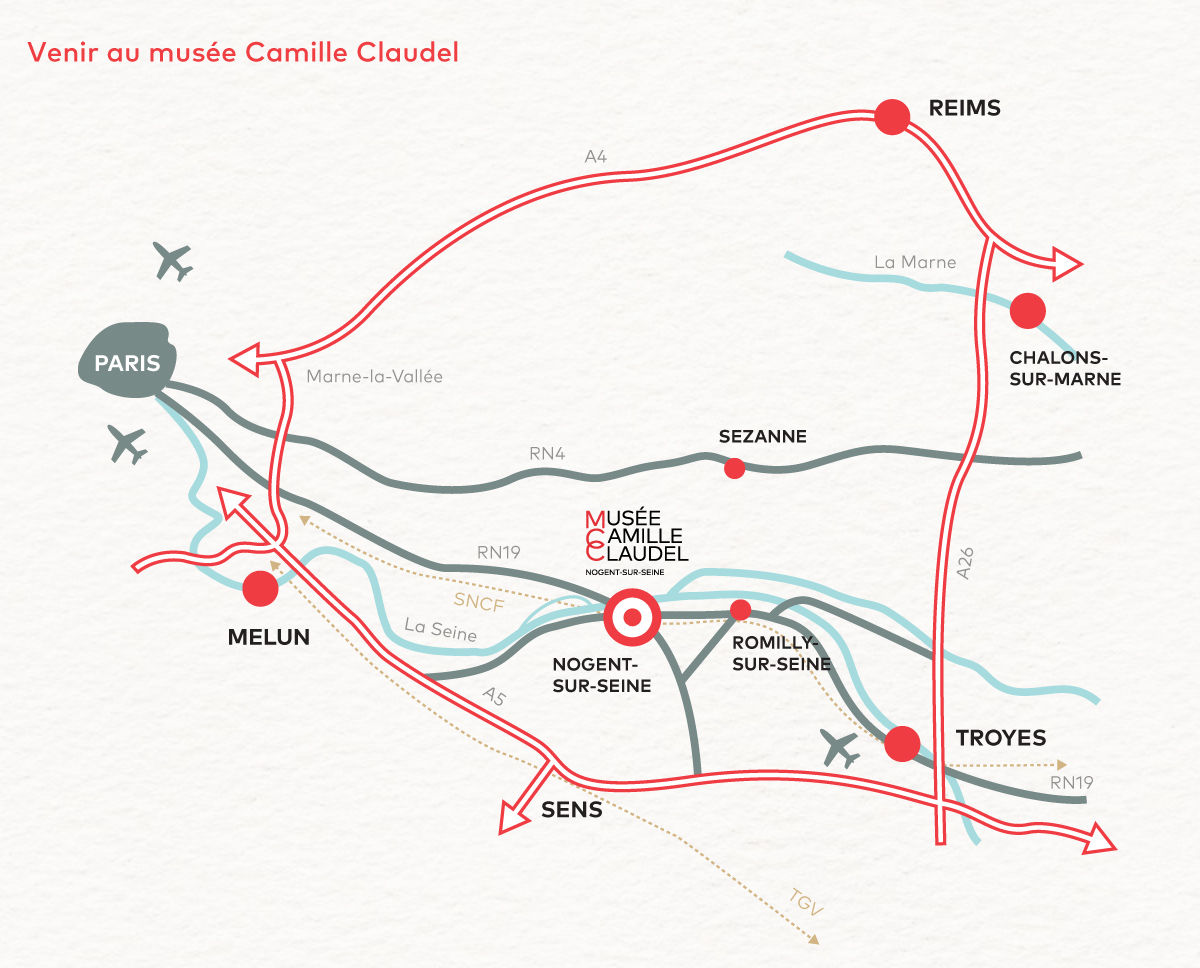A question ? Please contact us using the form below.
Musée Camille Claudel
10, rue Gustave Flaubert
10 400 Nogent-sur-Seine
A question ? Please contact us using the form below.
Musée Camille Claudel
10, rue Gustave Flaubert
10 400 Nogent-sur-Seine
Disabled visitors and those accompanying them enjoy priority, no-wait access to the museum. The entrance is located on 10 Rue Gustave Flaubert.
Two disabled-only parking spaces are located on Rue de l’Etape au vin.
Free admission for disabled visitors and persons accompanying them. Disabled visitors enjoy direct access to the entrance checkpoint and are kindly requested to present a valid disability card.
The museum is fully accessible to reduced-mobility visitors. Folding chairs and wheelchairs are made available upon simple request at the museum reception. In addition, audio guides equipped with an induction loop (for the hearing deficient) are also available upon request.
The museum welcomes all proposals for activities destined for disabled visitors, for persons benefitting from charitable, social-reinsertion and literacy programmes, and for persons undergoing medical treatment. The museum also offers tours and activities in LSF (French sign language) for the hearing-impaired.
For more information, please contact the booking office.
Full price
€8 outside exhibition periods
€10 during exhibition periods
Reduced rate*
(large family cardholders and seniors over 60)
€4.50 outside exhibition periods
€6 during exhibition periods
Free*
Students and young people under 26, museum scientific staff with ICOM or press, cards, job seekers, disabled war veterans
and their escorts, disabled visitors and their escorts. The first Sunday of the month for individuals.
*To benefit from these conditions, visitors must present the appropriate document(s)
Tickets valid for one day.
Annual season ticket: €15
Combined ticket with Château de la Motte-Tilly: €12
Guided tour of the permanent collections (1 hr 30 mins) : €60 fixed rate + €4,50 per person
Right to speak out loud for a lecturer-guide from outside the museum (excluding school groups, extracurricular groups and charity groups) : €10 fixed rate + €4,50 per person
Self-guided groups are required to rent headphones : €30 fixed rate
Tuesday to Sunday from 10 a.m. to 6 p.m. Closed on Mondays
Wednesday to Sunday from 10 a.m. to 6 p.m. Closed on Mondays and Tuesdays
We are closed on the following bank holidays:
The museum remains open to the public on the other bank holidays not cited above, according to the regular opening days and hours.
The ticket office closes 30 minutes prior to the closing of the museum.
Nogent-sur-Seine is located in the Aube département in the Champagne region. The entrance of the Camille Claudel Museum is at 10 rue Gustave-Flaubert.
Nogent-sur-Seine SNCF station is barely one hour from the Gare de l’Est station in Paris.
The Camille Claudel Museum is ten minutes on foot from the railway station.
Located 1 hr 20 mins from the French capital, the Musée Camille Claudel benefits from major trunk roads linking Nogent-sur-Seine with Paris via the A5 motorway (exit no. 18), Troyes via the D619 secondary road (1 hr), Reims via the D951 (1 hr 45 mins), Sens via the D939 (45 mins) and Provins via the D619 (20 mins).
Free parking spaces are available at the Parking Fournier car park (1 Rue Paul Fournier, 10400 Nogent-sur-Seine) and at the church car park in the town centre.

Pour recevoir la newsletter du musée Camille Claudel et être tenu informé de son actualité, veuillez indiquer votre courriel dans le champ «adresse email» et cliquez sur «inscription».
Si vous souhaitez vous désabonner, cliquez sur le lien figurant à la fin de chaque newsletter. Votre demande de désabonnement vous sera confirmée par un courriel automatique.